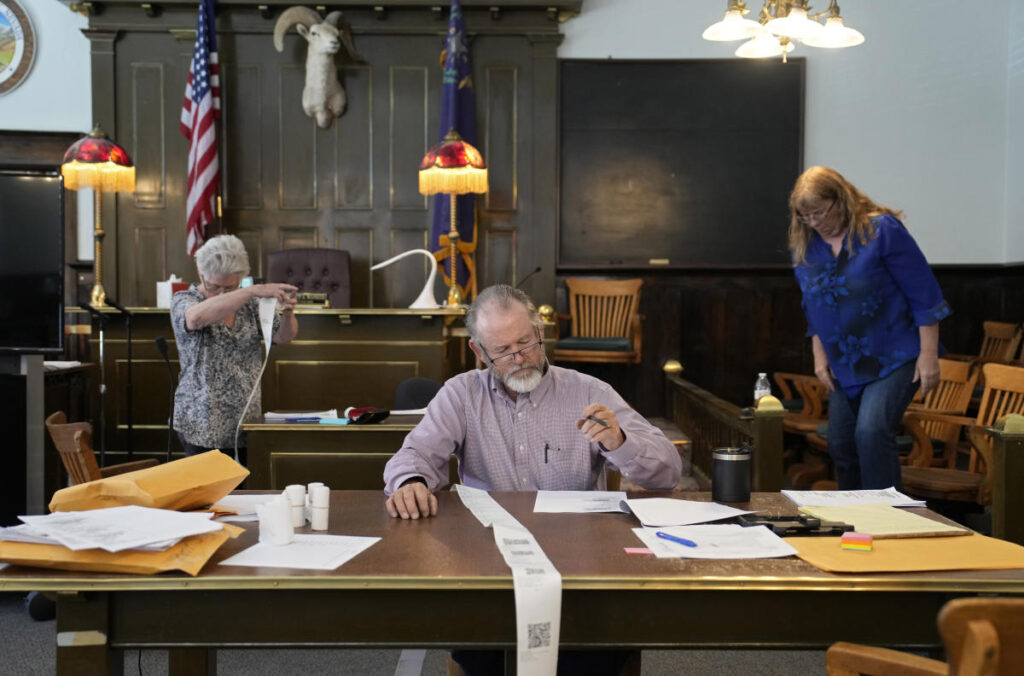In the lead-up to the 2024 presidential election, the specter of conspiracy theories surrounding the 2020 election has resurfaced, inciting skepticism toward voting machines, particularly among certain factions of the Republican Party. Central to this controversy is the proposal to replace electronic tabulators, which efficiently count votes, with labor-intensive hand-counting methods. Advocates for hand-counting argue that it provides a more transparent and trustworthy system, driven by a belief fostered by former President Donald Trump and his supporters that the 2020 election was marred by fraud. However, extensive research and practical experiences have indicated that hand-counting is more susceptible to human error, is costlier, and can considerably delay the election results. Despite these drawbacks, some jurisdictions persist in exploring hand-counting as a viable alternative.
Real-world attempts at hand-counting elections illustrate the significant challenges associated with this approach. For instance, Gillespie County in Texas undertook a hand-count of ballots for their Republican primary that extended nearly 24 hours, necessitating the work of 200 people. The cost incurred by this manual counting process was approximately double that of previous elections and was fraught with errors that had to be corrected, highlighting the impracticality of hand-counts when it comes to accuracy and cost efficiency. Similarly, in Nye County, Nevada, a monumental effort to hand-count midterm votes resulted in mismatches and discrepancies, with a staggering 25% difference between hand and machine counts. This led to multiple recounts and ultimately brought the counting process to a halt due to concerns over potential leaks of early vote tallies. A similar situation arose in Shasta County, California, where plans for a hand-count were abandoned due to exorbitant costs and staffing challenges.
Despite these illustrative failures, movements advocating for hand-counting persist. Recently, Georgia’s State Election Board mandated that poll workers perform human counts of paper ballots following voting, maintaining that three separate workers must agree on the count. This ruling was contentious, as it contradicted the advice of various officials—including the attorney general, secretary of state, and county election associations—suggesting a divide in opinion regarding electoral integrity measures. This continued push for hand-counting has roots in broader conspiracy theories propagated by figures like Mike Lindell, who have sought to galvanize grassroots opposition to electronic voting systems, often in regions characterized by strong Republican sentiment.
The implications of transitioning to hand-counting are significant, particularly concerning accuracy, speed, and overall election integrity. Studies have shown that human error rates in hand counts can be alarmingly high, with one research instance in New Hampshire revealing an 8% error rate when ballots were counted manually, compared to a mere 0.5% error rate with machine counting. Such discrepancies raise valid concerns about the reliability of manually counting votes, especially considering the tedious nature of the task, which drains focus and attention—areas where machines excel. Transitioning to hand-counting poses a risk not just to the efficiency of the electoral process but also undermines the safeguards designed to maintain confidence in election results.
Interestingly, while calls for hand-counting have gained traction, a substantial percentage of voters are already casting their ballots on paper, as is standard practice across the nation. It is estimated that around 98% of votes in the upcoming election will stem from paper ballots. Furthermore, existing protocols involve systematic audits of these paper votes and testing of the machines prior to elections to ensure accuracy. Such measures serve as a foundation for verifying election outcomes, thereby upholding the reliability of electronic counting processes.
To mitigate the growing distrust regarding electronic voting, it is crucial to engage with voters by demonstrating the robust checks and balances in place that secure electoral integrity. By educating the public on the thoroughness of current voting processes and the accountability measures enacted within them, organizations and officials could help ease the fears that fuel demands for hand-counting. Susannah Goodman of Common Cause emphasizes that transparency and demonstration of the election process can foster voter confidence, thereby potentially curbing the spread of misinformation and conspiracy theories surrounding the electoral process.
As the 2024 election draws nearer, the ongoing debate over voting methodologies remains highly relevant. The tensions between proponents of hand-counting and defenders of electronic voting systems pose questions not just about effectiveness, but also about the foundational beliefs concerning electoral integrity and transparency in the democratic process. In these critical moments, it is vital to objectively assess the implications of these debates on the electoral landscape, balancing the need for security and trust in the voting process against the realities of efficiency and accuracy in election administration.

